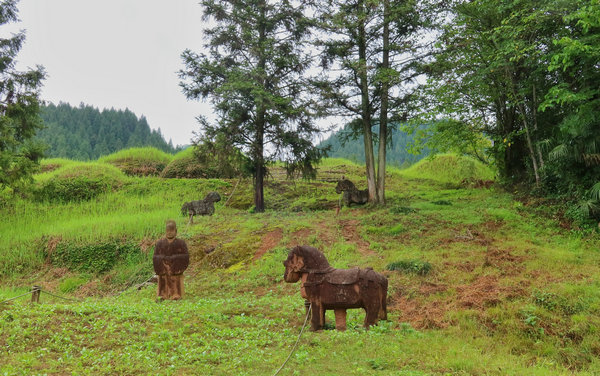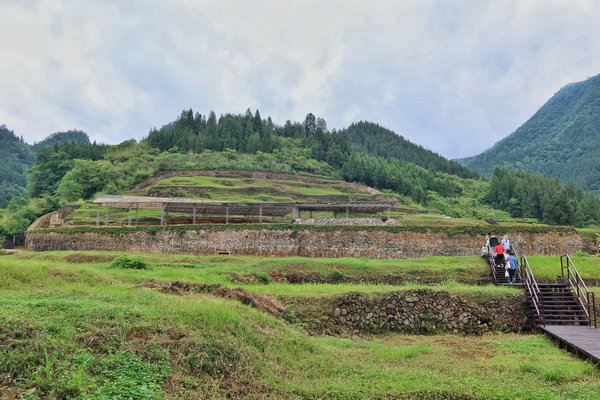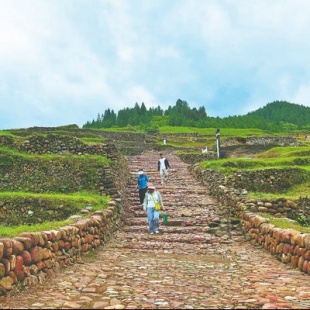Tusi site brings history back to life


Ten years have passed since Laosicheng in Yongshun county, Xiangxi Tujia and Miao autonomous prefecture, Hunan province, was designated a World Heritage Site. Today, the well-preserved ancient city, a witness to the ancient Tusi governance system, continues to stand amid the deep mountains, recounting its tales.
Tusi were hereditary tribal leaders governing areas where ethnic groups resided. They were recognized by ancient Chinese emperors and enjoyed some degree of political autonomy.
Laosicheng was the site of governance of the Tusi family surnamed Peng from 1135 to 1724. Covering 25 square kilometers, it is the largest and best-preserved ancient Tusi city site with the longest history in China up to now, says Yao Yuanli, director of the tour guide department of Laosicheng Museum.
In 2015, Laosicheng was inscribed on the World Heritage Site list as part of the Tusi sites, along with Hailongtun in Zunyi, Guizhou province, and Tangya in Enshi Tujia and Miao autonomous prefecture, Hubei province. Over the years, continued efforts have been put into its protection, research and promotion.
Qu Zhanghui, an official at the management office governing Laosicheng, says they have adopted a series of measures to protect the site.
As Laosicheng has many earthen ruins built against the mountains, forming a series of terraced platforms, the major potential risk is landslide. Moreover, it has ancient wooden buildings that can easily fall prey to fire.
Therefore, staff members patrol the site every day to identify potential risks. Technological measures are adopted to monitor the temperature and humidity of the soil and check if there have been landslides nearby.
Cameras have been installed to monitor ancient buildings, and staff members work around the clock to inspect the camera feeds, ensuring that the structures are not harmed by human activities.
"After monitoring for years, we find the site has remained generally stable without landslides. Its geographical structure is secure," says Qu.
No major constructions are allowed in the site, to keep its original features. The indigenous culture is well-preserved with native people, who, by staying back, have played a big role in local tourism.
"Indigenous people coexist with the site peacefully. Now, over 100 native people reside within the site, blending harmoniously with the original features to create a vibrant and culturally rich World Heritage Site," says Qu.
They are encouraged to participate in the protection and management of the site. The site is opened to the public as a tourist attraction, providing opportunities for local residents to earn additional income.
Laosicheng has cooperated with two other Tusi sites to carry out research projects and activities to deepen understanding of Tusi culture and discuss how to better protect and use them.
"The three Tusi sites have their own features," says Lei Jiasen, former director of Laosicheng Museum.
"Laosicheng and Tangya were seats of governance of different levels of Tusi, while Hailongtun was a high-level Tusi military castle. Collectively, they offer insights into the Tusi system from different angles."








































